For Immediate Release
Contact: Shane Bonnot
sbonnot@ccatexas.org
Houston, Texas – (November 4, 2022) – Yesterday, the Texas Parks and Wildlife Commission (Commission) adopted the proposed changes to the statewide oyster fishery proclamation, which included the closure of oyster reef areas in Ayres, Mesquite and Carlos Bays (three bays), and the temporary closure of restoration areas in Galveston Bay and San Antonio Bay.
“We applaud the Commission for their unanimous decision to protect and conserve the three bays from oyster harvest,” said Shane Bonnot, CCA Texas Advocacy Director. Texas Parks and Wildlife Department (TPWD) executive leadership and coastal fisheries staff are to be commended for recognizing the need to conserve these ecologically valuable oyster reefs, and it is refreshing to witness science and policy work in tandem to ensure a vibrant fishery for present and future generations.”
The three bays are characterized by a diverse network of intertidal and deep oyster reefs, expansive seagrass beds and fringing salt marsh, all of which provide critical nursery habitat for numerous aquatic species. In addition to the ecosystem services provided by these reefs, the positive role oyster reefs play in this habitat mosaic cannot be overstated and the proximity of Cedar Bayou to this area, serving as migration and recruitment corridor, further justified the reason for this closure.
“Establishing networks of protected oyster reefs isn’t a new concept,” said Pat Murray, President of CCA. “We see this as a common management tool in other states to help recruit oyster spat in adjacent areas while optimizing the habitat value within the closed area. Furthermore, what we find is that protecting areas from destructive harvest practices is a more cost-effective option when compared to the cost of restoring a degraded reef.”
The public and non-governmental organization response to this proposal during the rule-making process was historic. A total of 8,732 comments were submitted to TPWD, with 80% being in favor, 17% against and 3% neutral. Twenty-three non-governmental organizations also submitted letters of support, running the gamut from the Sierra Club to the Safari Club. “Make no mistake, closing those three bays and the restoration areas is a huge deal,” stated Rocky Chase, Chairman of CCA Texas Government Affairs. “CCA Texas and numerous conservation-minded organizations staunchly supported this proposal, and we are pleased that the commission decided to do what is best for the long-term sustainability of the oyster fishery.”
In related news, last week TPWD announced the opening of the Texas commercial and recreational oyster season to begin on November 1, with many shellfish harvest areas closed to oyster fishing. As mentioned in their October 27 press release, TPWD code allows for the emergency closure of an area to oyster harvest when it can be shown there is evidence of being overworked. These closings are based on samples collected by TPWD showing low catch rates of legal-sized, harvestable oysters. Of the 29 shellfish harvest areas along the Texas coast, 20 were closed at the start of the oyster season.
Beginning the oyster season with limited number of areas opening is an attempt by TPWD to strike a balance between the economic demands of the fishery and the ecological needs of the bay systems.
“We recognize the economic impact of these closures on local families and businesses that depend on oyster harvests,” said Robin Riechers, director of Coastal Fisheries for TPWD. “As we continue to work with the oyster industry, we want to balance conservation and restoration needs with those of the commercial fishery. These compromises bring some biological risk for shellfish populations, so we will be diligent in our oyster population monitoring.”
It is important to note that last year’s oyster season was cut short because a general lack of market size oysters available for harvest and the forecast for this year appears to be much of the same.
“If TPWD strictly adhered to the metrics they historically follow to re-open a harvest area after a closure, TX-1 (East Galveston Bay) would be the only productive shellfish harvest area available for the industry to prosecute,” stated Robby Byers, CCA Texas Executive Director. “The department is potentially sacrificing oyster density and future availability of oysters, as most of the areas opened have not yet rebounded from previous years’ harvest. Not to mention the structural integrity and vertical height of reefs within some of these areas will be greatly minimized by oyster dredges. We are concerned that those reefs – particularly East Matagorda Bay (TX12) – will be subjected to commercial harvest before they meet the department’s own guidelines for sustainability. We are thrilled the Commission voted to conserve Ayres, Mesquite and Carlos Bay reefs but worried about over harvest in these other bay systems.”
CCA Texas has encouraged TPWD to continue coordination of restoration and regulations workgroups that were created after the March 2022 Texas Parks and Wildlife Commission meeting. Along with our conservation partners, we know there are opportunities to collectively investigate management alternatives that will improve sustainability of the fishery and provide future opportunities for oyster fishing.
###
Coastal Conservation Association Texas (CCA Texas) is a non-profit marine conservation organization comprised of tens of thousands of recreational anglers and coastal outdoor enthusiasts. Founded in 1977, CCA started in the great state of Texas and has grown to include state chapters along the Gulf of Mexico, Atlantic Seaboard and Pacific Coast. The stated purpose of CCA is to advise and educate the public on the conservation of marine resources. The objective of CCA is to conserve, promote and enhance the present and future availability of these coastal resources for the benefit and enjoyment of the general public.





